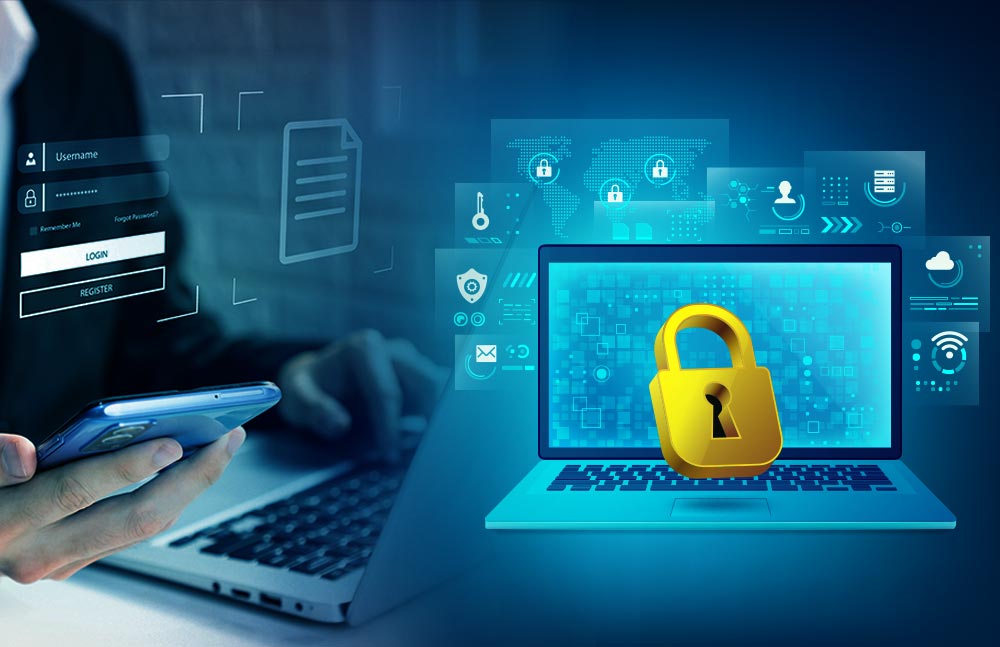Cyber security is a complex topic that protects devices, systems, and data from attacks. These attacks could include stealing personal information, extorting money, or destroying a company’s infrastructure.
Having a robust cyber security strategy is crucial for businesses and individuals alike. However, it’s easy to make mistakes that can lead to a data breach.
Security Monitoring
Many security threats can impact an organization, ranging from disgruntled employees to malware and unpatched vulnerabilities. To prevent some of this, what is cybersecurity? And how it affects an organization. From a network standpoint, these threats can be detected through cybersecurity monitoring. Using a combination of network devices and endpoints, this system monitors all aspects of the computer network in real-time. This allows the team to identify and respond to security threats before they become significant problems.
This process is known as continuous security monitoring and works by logging all actions that happen on the network in real time. The logged data is then compared against global threat intelligence feeds to detect patterns and anomalies that could indicate a cyberattack. A security alert will be created if the behavior matches an attack profile.
Cybersecurity monitoring focuses on all assets across the organization, including servers, laptops, and mobile devices. The system gathers and analyzes the information in real-time and then reports it to key stakeholders. The best-in-class solution also provides remediation steps, playbooks, and priority alerts.
With the ever-changing landscape of cyberattacks, traditional security controls like firewalls and antivirus software are no longer enough to protect organizations.
This is a complex process that requires a combination of advanced tools. These include a SIEM tool, a solution that collects logs and packets without human interaction, records the analyzed log for future analysis, and monitors the network traffic in real-time to identify any suspicious activity and take action.
Firewalls
Firewalls monitor information going to and from a network, filtering it according to rules established by the firewall administrator. There are a few different types of firewalls, each with its own unique set of functions.
The first called a packet filtering firewall, filters every bit of data that passes through a network to determine whether it is legitimate or harmful. For example, a packet filtering firewall can detect macros (a series of scripted commands that streamline a complex procedure into one executable rule), which hackers often use to hide malicious code within otherwise harmless programs. The second type of circuit-level firewall is a step up from the previous packet filtering technology. It provides even more advanced protection by evaluating information at the circuit level, where it can identify malware and stop attacks before they take hold in your system.
On the other hand, a network firewall monitors communications from a secured local area network and can block specific websites and IP addresses. It can also filter traffic based on network and internet rules. A network firewall can also monitor the performance of a hardware device, such as a server or router, and help protect against attacks such as denial of service (DoS) that slow down or crash servers.
Lastly, application-layer firewalls monitor information passing between your internal systems and the outside world through applications like file transfer protocols or web browsers. These firewalls are especially useful for preventing cyberattacks by protecting against common vulnerabilities. They can even recognize the presence of malware by examining a file’s content or its handling at the application layer.
Authentication
Authentication is one of the oldest cybersecurity concepts and involves proving who someone is. Without authentication, anyone could gain access to a computer system or network. Authentication verifies users’ identities through confidential information like a password or biometrics.
In the digital world, this can be accomplished through various means, including scanning a person’s face or retina, verifying their thumbprint, or even listening to the frequencies of their voice. These methods are similar to how we recognize our friends in person but with the added benefit of verifying that the user is who they say they are.
The most common form of authentication is combining a login name and password. These systems compare the login credentials with those stored internally and, if valid, allow the user to log in to their account. However, these passwords are easy targets for cybercriminals and can be compromised through phishing attacks and poor password hygiene.
Most organizations use and recommend additional authentication factors for layered security to combat this. These factors can be anything from a phone’s camera to a fingerprint scanner or the physical location of your servers in your basement. These methods can be cumbersome for users, but the added level of protection provides a significant barrier to hackers.
No matter how bulletproof your defenses are, it is crucial to understand that humans are the weakest link in your cybersecurity strategy. Educating your employees on how to identify potential threats, what information is critical, and how to protect it can help mitigate the impact of an attack. It is also essential to establish clear cybersecurity policies for all stakeholders so that everyone understands their responsibilities in protecting the organization’s information.
Encryption
With the recent high-profile data breaches, consumers and businesses know that their personal information is at risk of falling into the wrong hands. Cybercriminals are often after financial gain and can use this data for identity theft, ransomware, and other scams. To protect this sensitive information, organizations implement security measures such as encryption. Encryption scrambles readable text into an unrecognizable form that only those with the decryption key can unscramble. This helps ensure privacy and prevents data breaches, whether in transit or at rest.
Encryption is also used to keep data secure on lost or stolen devices, such as laptops and smartphones. This technology prevents hackers from accessing sensitive information on these devices without the decryption key.
Network Security
Network security protects a computer network and its devices from attacks. It is one of the most critical aspects of cybersecurity because it prevents cybercriminals from accessing sensitive information that could compromise a company’s financial success, reputation, and operational ability.
The most common network threats are malware, phishing, and DDoS attacks. Many of these attacks involve a human element and can exploit vulnerabilities in endpoints, networks, and applications. Network security uses several tools, including firewalls, zero-trust policies, network access control, and threat detection.
All networks have vulnerabilities, regardless of the infrastructure used. Whether it’s a workstation that misses critical security updates, an employee using a personal device to connect to the corporate Wi-Fi, or third-party services accessing a network, these weaknesses must be addressed with appropriate protection methods.
Fortunately, various hardware and software tools address the most pressing network security challenges. These tools cover every OSI model layer and include a firewall, load balancers, intrusion detection systems (IDS) and IPS, sandboxing technologies for unknown objects, and anomaly detection for suspicious behavior.
The most effective cybersecurity strategies use multiple tools and techniques in conjunction with each other. For example, email security includes spotting and intercepting phishing emails. In contrast, endpoint security provides software and hardware that can detect and remove malware from the system and prevent it from spreading.

